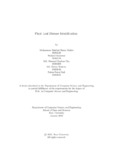| dc.contributor.advisor | Rasel, Annajiat Alim | |
| dc.contributor.advisor | Karim, Dewan Ziaul | |
| dc.contributor.author | Hasan Mahin, Mohammad Rakibul | |
| dc.contributor.author | Moonwar, Waheed | |
| dc.contributor.author | Rayhan Chy, Md. Shamsul | |
| dc.contributor.author | Shahriar, Md. Fahim | |
| dc.contributor.author | Rafi, Fahim Faisal | |
| dc.date.accessioned | 2024-01-17T08:14:18Z | |
| dc.date.available | 2024-01-17T08:14:18Z | |
| dc.date.copyright | 2023 | |
| dc.date.issued | 2023-01 | |
| dc.identifier.other | ID: 20201220 | |
| dc.identifier.other | ID: 20201219 | |
| dc.identifier.other | ID: 19201109 | |
| dc.identifier.other | ID: 19201046 | |
| dc.identifier.other | ID: 19201081 | |
| dc.identifier.uri | http://hdl.handle.net/10361/22178 | |
| dc.description | This thesis is submitted in partial fulfillment of the requirements for the degree of Bachelor of Science in Computer Science and Engineering, 2023. | en_US |
| dc.description | Cataloged from PDF version of thesis. | |
| dc.description | Includes bibliographical references (pages 76-83). | |
| dc.description.abstract | Agriculture has consistently been an essential component of our day-to-day life over
the centuries. Because of its contribution to our country’s revenue, the importance
of agriculture has been steadily growing over the course of the years. However, there
are some counter factors that prevent us from reaping the full benefits that crops
have to offer. The presence of a wide variety of natural diseases on plant leaves is
one such factor. The most prominent causes of these problems are typically severe
weather conditions and excessive use of pesticides, both of which put a strain on
the economy of Bangladesh as a whole. To reduce the severity of the problem, we
are going to design an image processing system that utilizes Deep Learning and
Convolutional Neural Networks (CNN) to classify plant leaf diseases. Our primary
demographic of interest consists of farmers and other people willing to tend to crops.
We have concluded that the best way to go about this is by constructing a website
and making it as simple and straightforward as possible. The user will select im ages of the diseased leaf, and our CNN model will predict and categorize the leaf’s
condition based on the chosen images.
After implementing CNN, we introduce another model, namely LIME, which is
based on the concept of Explainable AI (XAI). An XAI is an artificial intelligence
that mainly helps humans to understand the decisions or predictions made by an
AI. In this scenario, after our CNN model classifies the diseased leaves, the XAI aids
us in understanding the reason and cause behind the leaves mentioned above being
classified as how they are by the CNN model.
Conclusively, following the completion of running our models, we managed to get a
99.54% accuracy rate in our testing phase. | en_US |
| dc.description.statementofresponsibility | Mohammad Rakibul Hasan Mahin | |
| dc.description.statementofresponsibility | Waheed Moonwar | |
| dc.description.statementofresponsibility | Md. Shamsul Rayhan Chy | |
| dc.description.statementofresponsibility | Md. Fahim Shahriar | |
| dc.description.statementofresponsibility | Fahim Faisal Rafi | |
| dc.format.extent | 83 pages | |
| dc.language.iso | en | en_US |
| dc.publisher | Brac University | en_US |
| dc.rights | Brac University theses are protected by copyright. They may be viewed from this source for any purpose, but reproduction or distribution in any format is prohibited without written permission. | |
| dc.subject | Neural network | en_US |
| dc.subject | Convolutional Neural Network (CNN) | en_US |
| dc.subject | Plant leaf disease identification | en_US |
| dc.subject | Deep learning | en_US |
| dc.subject | XAI | en_US |
| dc.subject | Image processing | en_US |
| dc.subject.lcsh | Cognitive learning theory (Deep learning) | |
| dc.subject.lcsh | Plant diseases--Diagnosis | |
| dc.title | Plant leaf disease identification | en_US |
| dc.type | Thesis | en_US |
| dc.contributor.department | Department of Computer Science and Engineering, Brac University | |
| dc.description.degree | B.Sc. in Computer Science and Engineering | |

